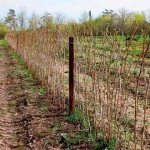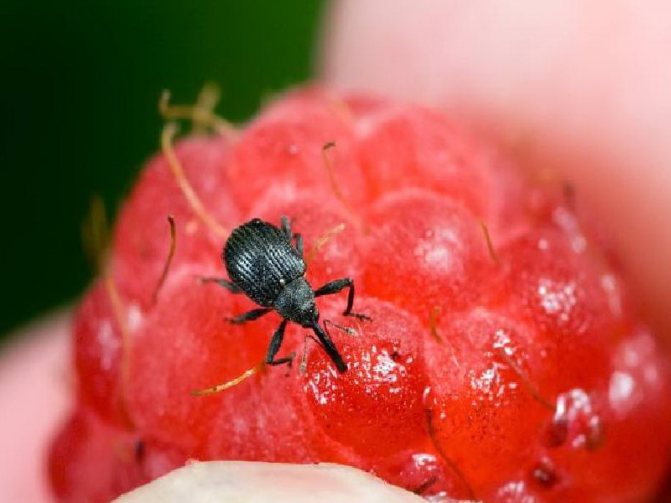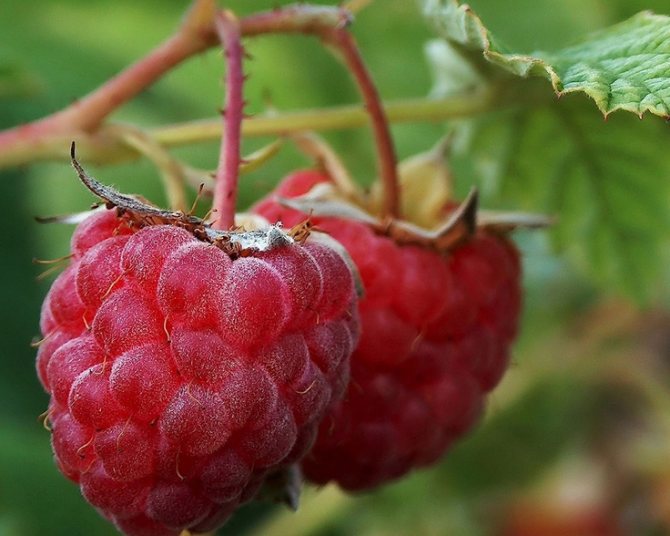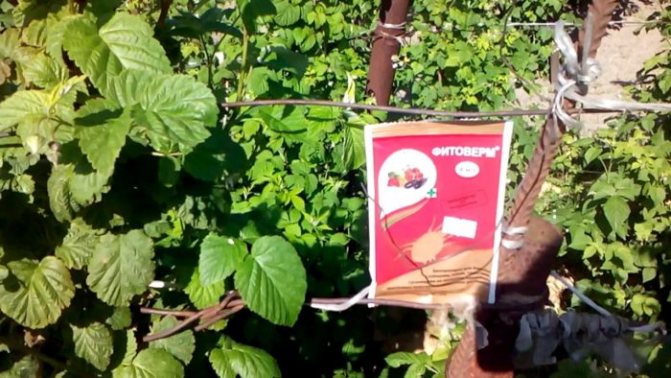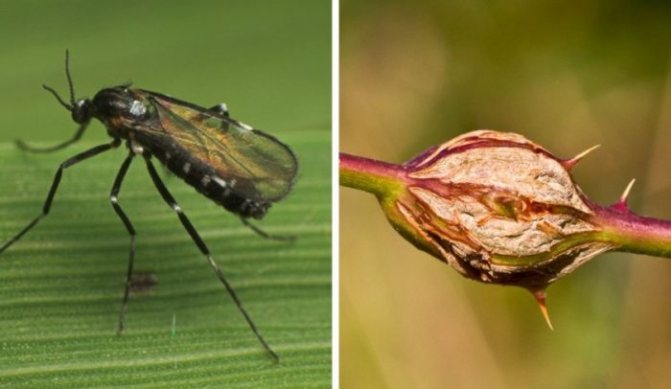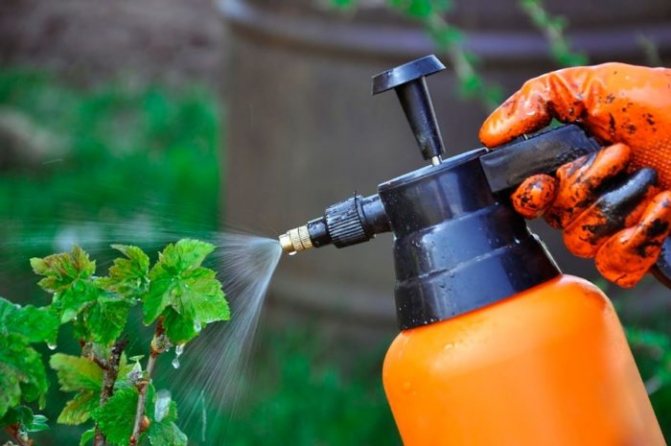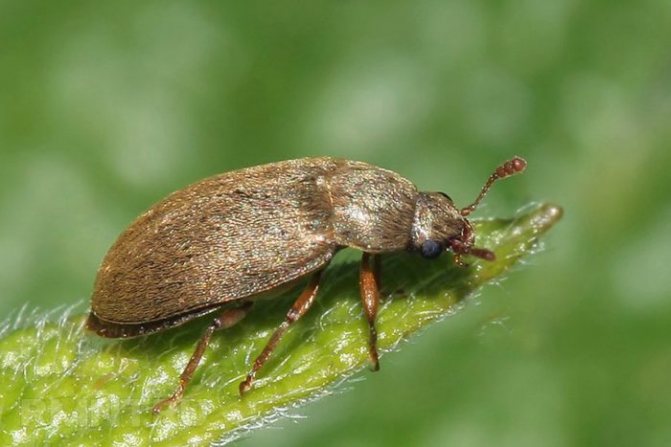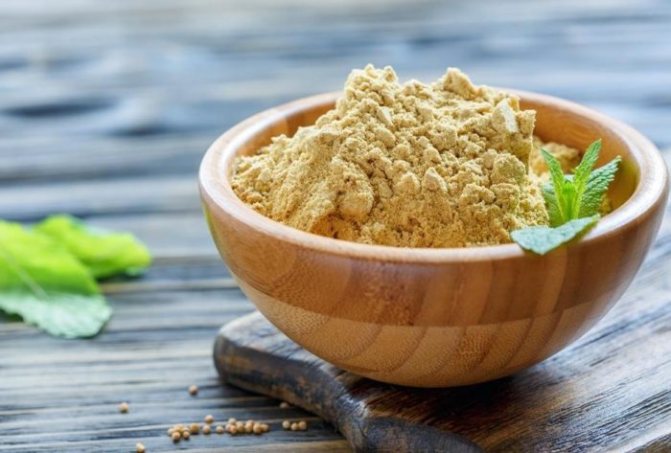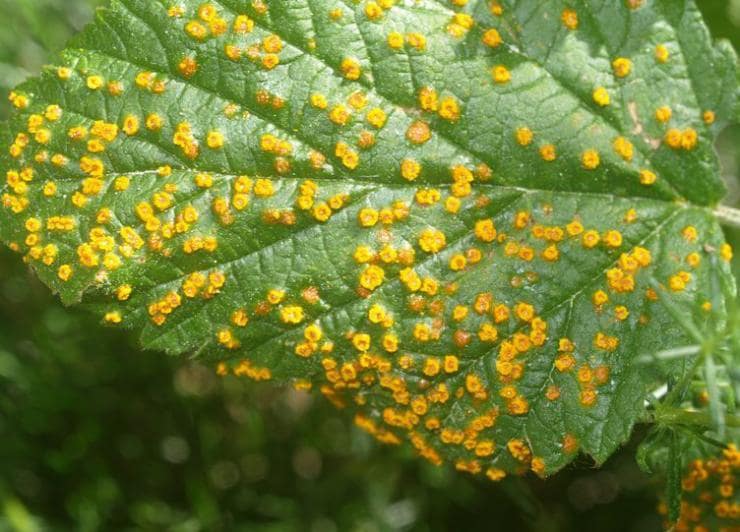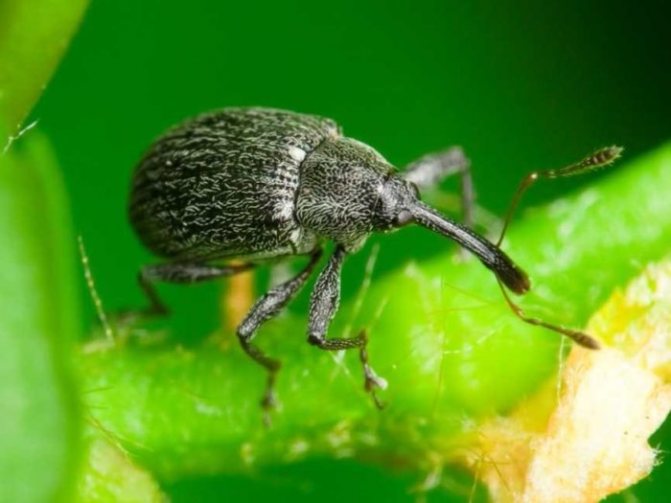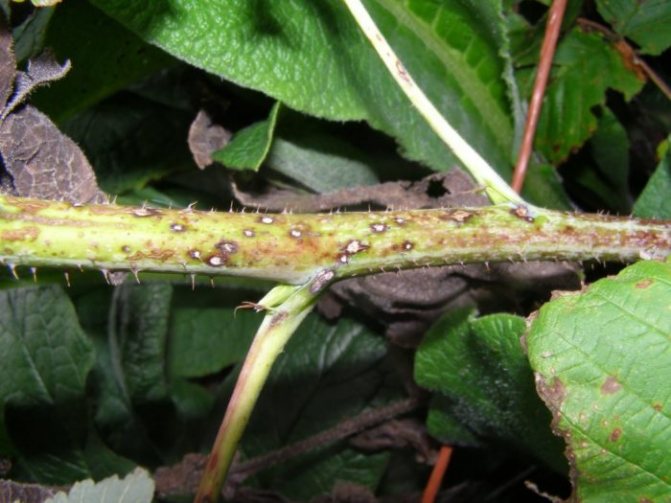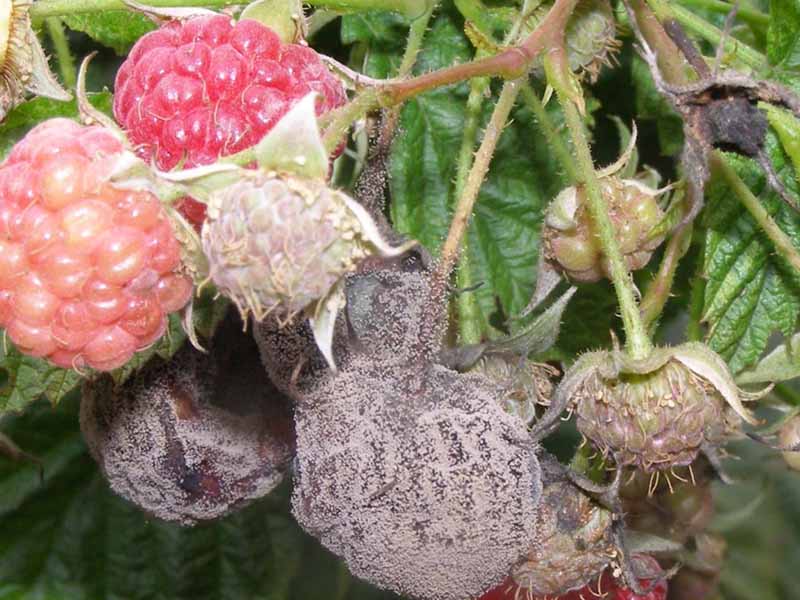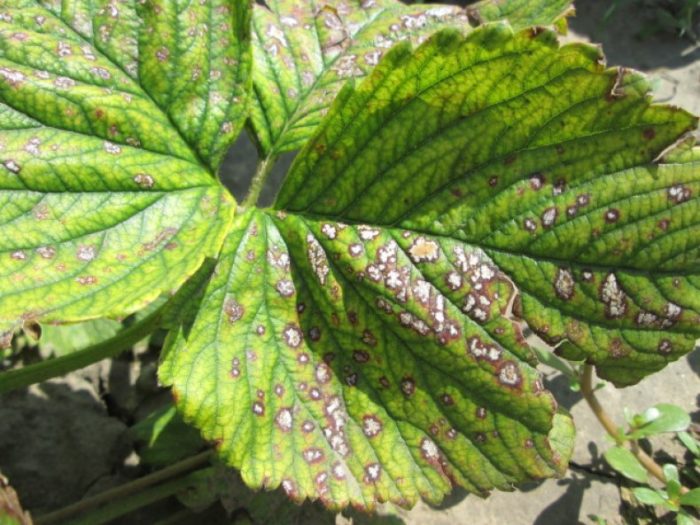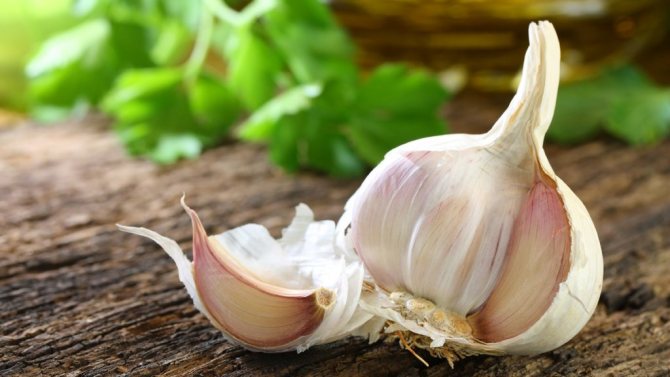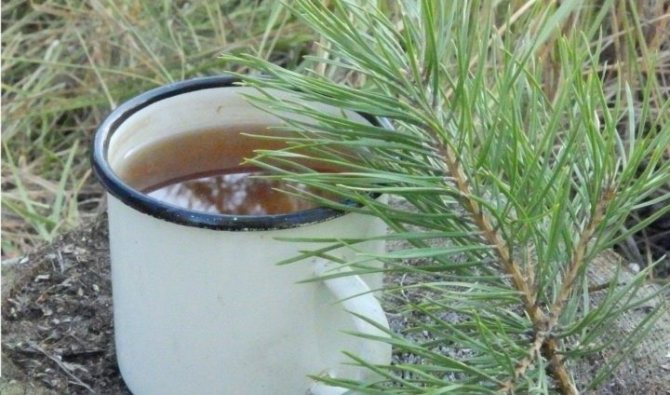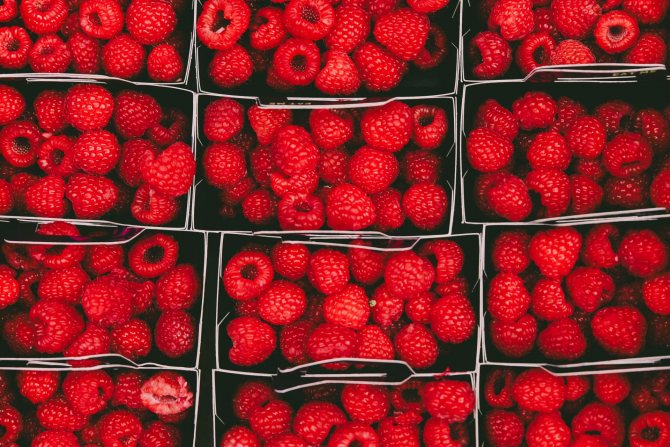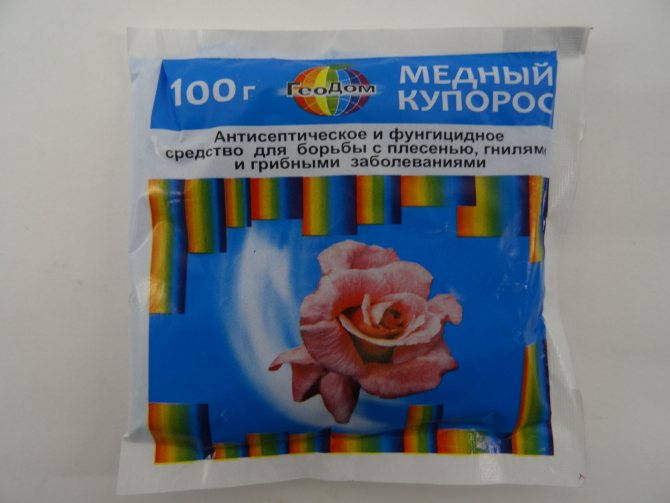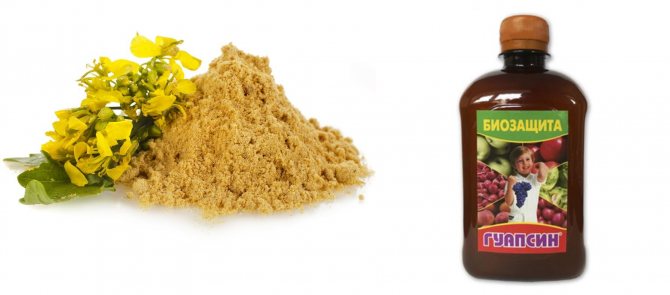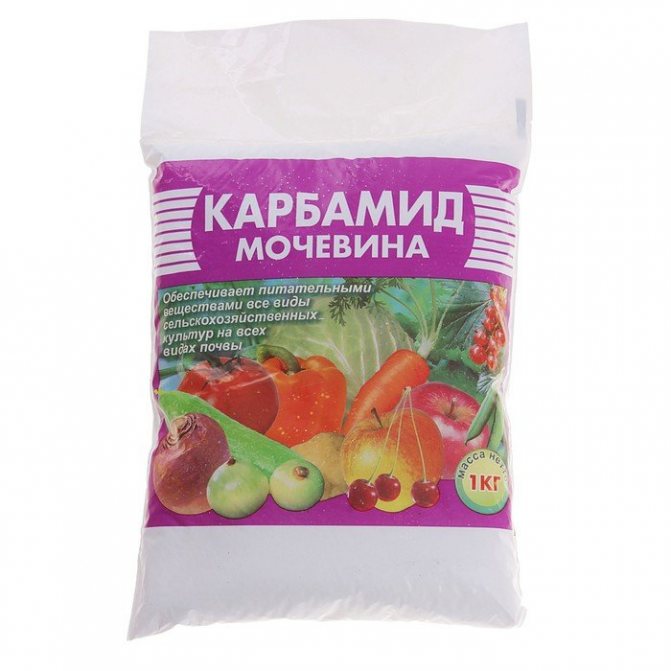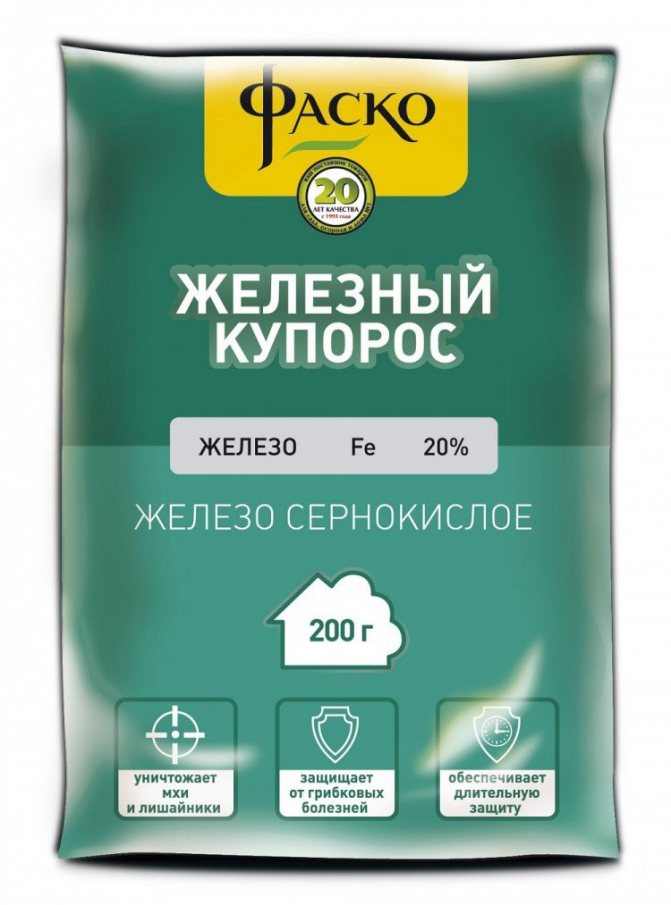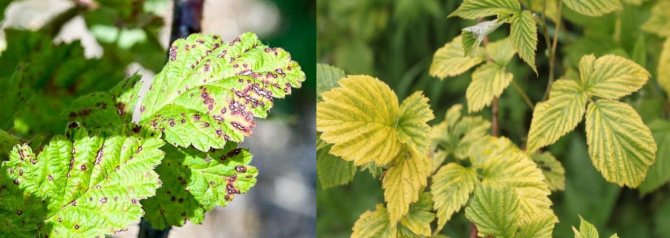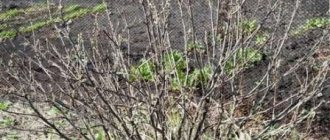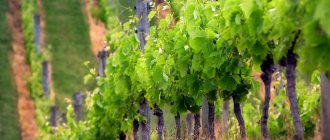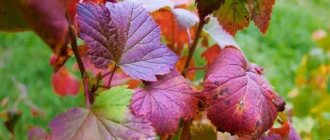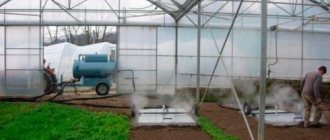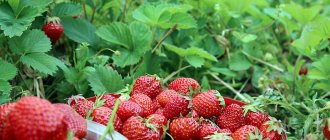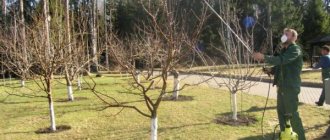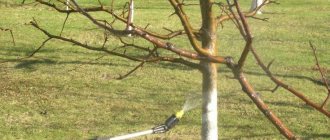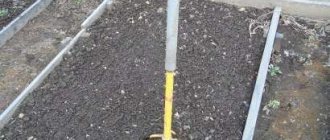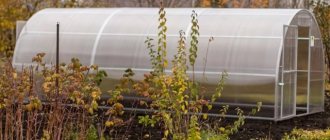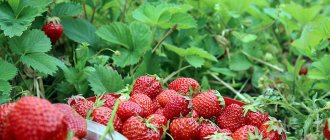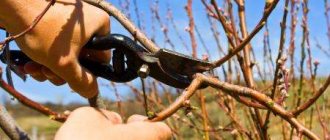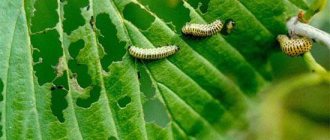April 27, 2020 Raspberry
Is it necessary to process raspberries from diseases and pests
Raspberries are susceptible to bacterial and fungal infections such as anthracnose, rust, various spots, mosaic and other diseases. Of the pests, raspberries are most often attacked by aphids, spider mites, gall midges, raspberry beetles, and raspberry-strawberry weevils. And in order to protect the raspberry from pests and diseases, it is necessary to do not only the treatment of already diseased bushes, but also to carry out preventive spraying.
When to process raspberries
Raspberries begin to be processed in early spring, immediately after the snow melts and along unblown buds. The first preventive spraying can be carried out at a daytime temperature of +5.
In the fall, after leaf fall, additional spraying and pruning are carried out.
Raspberry processing in spring
The main treatments in the raspberry tree begin in early spring and end a few days before the raspberry blossom. It is better to carry out 3-4 prophylactic sprays than to then deal with pests or diseases that can infect all the bushes.
In central Russia, snow melts in early to mid-April. And it is at this time that you need to come to the garden area and process all the berry and fruit bushes and trees. But before you start spraying, clean the raspberry tree: remove the leaf litter under the raspberry, cut off the broken, old and frozen branches, remove the thickening shoots, leaving 5-7 strong last year's shoots in the bush.
Remember to disinfect your pruning shears when pruning after cleaning each bush or tree.
If the raspberry tree is mulched with straw, then it must also be removed so that the soil warms up sooner. Only after that they begin to process the bushes from diseases and pests.
Usually, for the first time, raspberries are sprayed with copper or iron vitriol, Bordeaux liquid, and urea for diseases. However, copper-containing drugs accumulate in the soil, and then in berries and enter the human body, so more and more people are switching to more modern or natural drugs: Fufanon, Actellik, Oksikhom, Horus, Farmayod, Fitolavin.
Many gardeners do not spray raspberries, but pour boiling water over it (until the buds swell), but this is possible only for those who have water on the site and the ability to boil it.
The second time the raspberries are sprayed from pests in a couple of weeks, when the buds, the so-called green cone, begin to bloom. At this time, Fitoverm, Bitoxibacillin are used. If last year there were a lot of bushes affected by viral diseases, you can additionally sprinkle raspberries with phytolavin and pharmacayod.
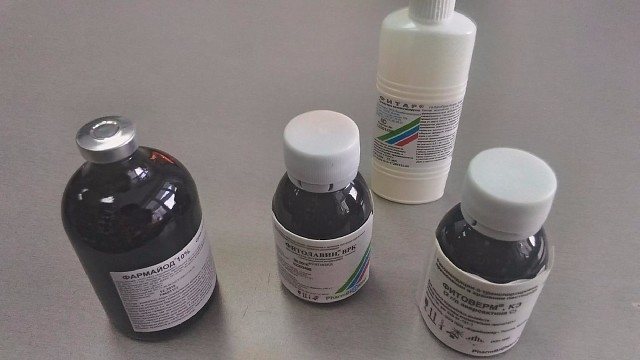
Processing raspberries in autumn
In autumn, raspberries are processed after falling leaves. Old foliage can be left in the raspberry tree if there were no pests and diseases on the bushes, and spraying was carried out with natural preparations, in other cases it is better to burn the infected foliage.
Fruiting branches are cut from the bushes, weak shoots and remaining foliage are removed and preventive spraying is carried out. You can use the same means as in the spring.
White spot (septoria)
Fungal septoria is caused by marsupial fungi - Septoria rubi. The fungus spreads to shoots, foliage and stems.
The reasons
Fungi actively multiply at high humidity. Also, if the plantings are thickened, there is an excess of moisture in the soil, with sudden changes in weather.
Symptoms
The disease can be detected at the end of June. Dark brown spots appear on the leaves.
Further, by autumn, brownish spots become lighter, black dots appear in the center. There are controversies at these points. Spots spread over the leaf, it dries up.
On the petioles, blurred specks of various shapes are visible, they are reddish-purple. Almost every shoot is also spotted. The spots grow within 14 days.
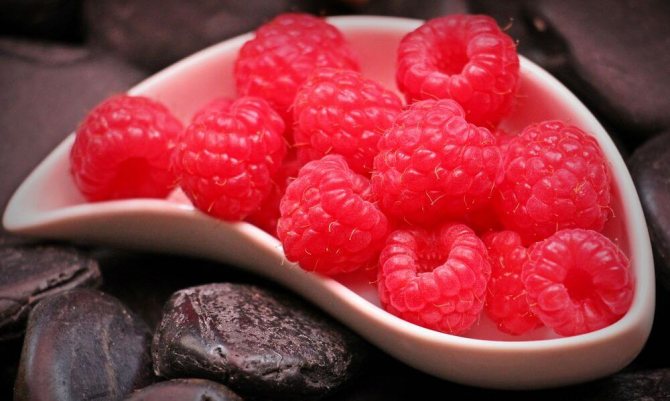

Prevention and treatment
For prevention, weeds are constantly pulled out, diseased stems are cut out and burned. Thinning plantings.
For treatment in early spring, when the kidneys are not even swollen yet, raspberries are treated with Nitrofen, dissolving 200 g in a bucket of clean water (10 l).
Before blooming the buds, spray it with Tsineb 2 times: 1 time pour 50 g of the drug into a bucket of water (10 l) and spray it, and after 10 days it is also treated with Tsineb's solution, placing 30 g in a bucket of water. After picking the berries, the bushes are sprayed with Bordeaux liquid.
Frequent mistakes during the procedure
Some gardeners do not know how to process the plant so that it does not hurt. Most often they make the following mistakes:
- The bactericidal preparation is diluted incorrectly. If the product is not used according to the instructions, it will either burn the foliage (if the concentration is exceeded), or it will not work at all.
- Do not prune infected shoots. If this procedure was not carried out in the spring, then the damaged plant dies. While infecting the entire raspberry tree.
- Failure to comply with the processing time. Spraying the plant during the period when the snow has not yet melted will be ineffective. Since you may not notice the affected shoots, from which the pests can move to healthy bushes. Processing in the late period threatens the spread of diseases and parasites throughout the plantation.
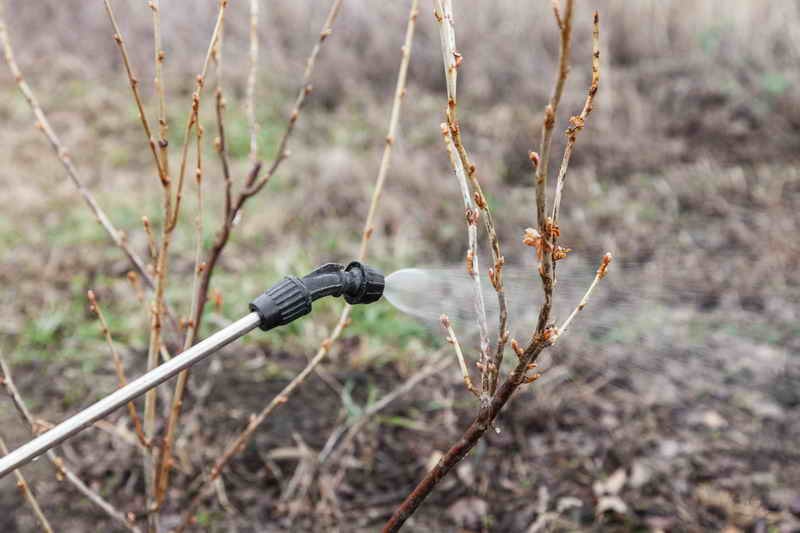

If you observe the timing of the processing of plants, as well as the proportions for the use of drugs, it is possible to prevent the occurrence of pests and diseases on shrubs. You can only save a raspberry tree with proper care.
5 / 5 ( 1 voice)
Anthracnose (bitter rot)
Anthracnose is a fungus that occurs in the form of specks on the shoots. A sick bush does not grow, its leaves fall, then the berries die. The bush becomes unstable to frost, it dies.
The reasons
The fungus is transferred by infected plant debris, seeds, soil, compost, insects, and non-disinfected equipment. It spreads during showers. Therefore, it is better to plant raspberries away from trees, bushes and plants. The fungus actively multiplies at a high humidity of 90% and a temperature of +22 degrees.
Symptoms
On the stems, whitish-gray spots with a scarlet border are visible. Spores of the fungus multiply and arise everywhere: on the bark, shoots, berries. Black dots are visible on the bark, the foliage withers, the berry is covered with ulcers, and later dries up.
Prevention and treatment
To plant raspberries, you need to choose an area illuminated by the rays of the sun, protected from northern winds.
In case of illness, raspberry bushes are sprayed with a Bordeaux mixture. Spraying is repeated every 10 days. Another method of struggle - with the formation of buds, you can spray the bushes with Fundazol 50 SP.
Diseases of raspberries and the fight against them: video
Below video:
When to process shrubs?
Raspberry processing is carried out in the spring, immediately after the snow melts. The air temperature during the daytime should be + 5 ... + 10 ° С. The processing period differs depending on the regions:
- In the Urals and Siberia, the spraying procedure begins around April.
- In the middle lane - mid or late March.
- South of Russia - the beginning of spring.
For this, a sunny day is chosen. The processing time is also strictly defined - this is the morning hours, or sunset.


Raspberry chlorosis and its treatment
Description of symptoms - yellowness is visible on the foliage along the veins. Varieties not resistant to chlorosis: Usanka, Marlboro, Kuzmina, Fastolfe, Turner, Novosti, Zheltaya Spirina.
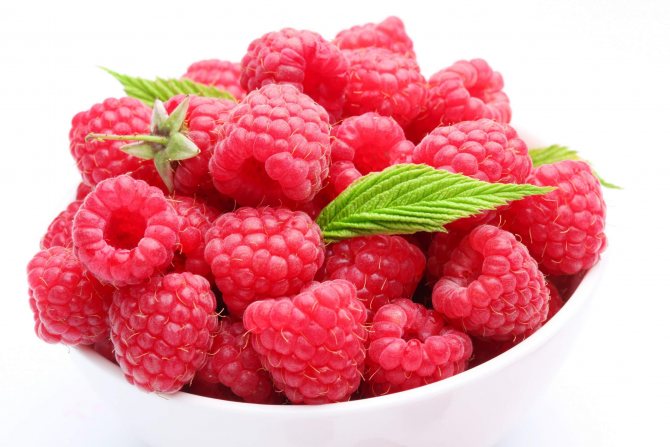

The reasons
Chlorosis can be viral, the viruses themselves live in pests: aphids, ticks, as well as in plants, in the roots. The virus can remain on garden tools that have not been disinfected.
Raspberries can also get chlorosis not because of viruses, but because of unfavorable weather or a lack of any elements in the ground: boron, iron, manganese.
About
What chemicals are recommended to use
Processing raspberries in early spring is the key to a good harvest, for this they most often use the following means:
- It is recommended to spray raspberries with urea. The use of urea can saturate the bush with nitrogen and, at the same time, increase the protective properties of the bush to combat various ailments and dangerous pests. This drug is used at the rate of 15 grams of powder per 300 grams of water for each bush. With the help of this drug, you can defeat the weevil and aphids.
- The next effective remedy is the treatment of raspberries with copper sulfate. This drug is excellent for treating diseases such as gray rot and anthracnose. Copper sulfate is sprayed on the stems, foliage and soil in which the bush grows. And this remedy is prepared as follows, one bush will require 1 g of the drug, dissolved in 1 liter of water.
- And the last effective chemical is the treatment of raspberries with iron vitriol. This tool is used as a formidable weapon to defeat diseases such as powdery mildew, rust and to destroy anthracnose. Raspberries are treated with iron vitriol as follows, 1 liter of water is added to 10 grams of the substance. This dosage is enough to spray exactly one bush.
Treatment with Dnock also proved to be quite good. But such a remedy is used much less often, in contrast to the above remedies.
It is important to know that, in the overwhelming majority, the reason why many ailments begin to progress is the increased acidity of the soil and its excessive moisture. It is for this reason that it is necessary to control the watering of the raspberry tree. And in order to reduce the acidity of the soil, it should be fertilized regularly with wood ash and slaked lime at the rate of 150 grams per 1 square meter of soil.
Didymella raspberries: treatment
The causative agent of didimella (purple spot) is a fungus that develops on raspberries and blackberries; it affects both stems and roots. Varieties not resistant to disease: Kitaevskaya, Admiral, Glen Clova, Moling Promis, Rubin Bulgarian, Solnyshko, Kokinskaya, Kaskad.
The reasons
Causes of the disease:
- Too dense plantings, if the bush grows on land with an excessive amount of nitrogen, on heavy soil with a high level of groundwater.
- Cracked bark due to severe frost in winter.
- Damaged stems due to the shoot gall midge - an insect that develops in the galls under the bark.
Symptoms
In early or mid-June, at the bottom of the rhizomes, where the leaf petioles are attached, small brownish-purple specks appear. Then they appear throughout the shoot, merge.
Brownish spots with a whitish center are visible on the stems, and then cracks appear and the shoots break.
Sick kidneys do not bloom. Large brownish spots with a yellowish border are visible on the foliage.
After a year, the tops of the stems wither, numerous cracks appear on the bark, dark dots are fungal spores.
Prevention and treatment
The varieties have some resistance to disease: Kostinbrodskaya, Scarlet Sail, Modest, Malling Leo, Balsam, September, Julia, Kuzmin's News.
If you plant raspberries in the ground, where white mustard was previously sown, and then mowed and mixed with the ground, this increases the resistance of the shrub to disease.
The amount of gall midge is reduced by feeding with phosphorus and potassium, and also with ammonium sulfate, ammonium chloride.
Attention! It is imperative to dig up the ground in the fall to the depth of a shovel. Thickened landings should not be allowed. Attaching the raspberry to the trellis has proven itself well.
To prevent disease, shoots that have already borne are cut and burned.
The development of the disease suppresses:
- spraying the bushes until the buds swell with a 7% urea solution (700 g is poured into a bucket of clean water);
- when buds grow, the bushes are sprayed with a 0.5% solution of urea (50 g is poured into a bucket of water);
- when budding, the bushes are treated with 1% Bordeaux liquid;
- when young branches grow up to 20 cm in height, before budding and after raspberry harvesting, the bushes are treated with 1% Bordeaux liquid or cuproxate.
Biological agents
The composition of drugs in this group includes living bioagents or waste products of these agents. To obtain the result, all the conditions recommended in the instructions are observed, taking into account the features of the product.
Fitoverm
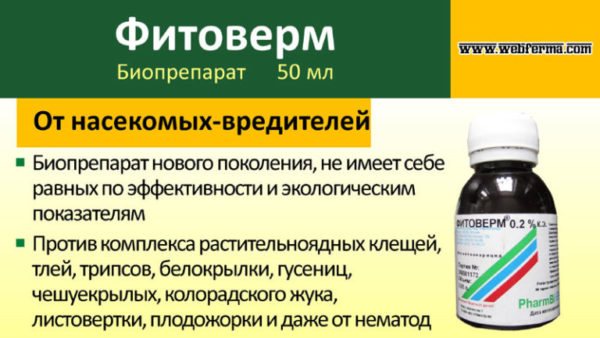

A preparation of natural origin, based on special toxins of soil microorganisms. The active ingredient is a concentrated emulsion of aversectin C, available in ampoules, vials, cans.
Act
It is used to destroy insect pests of horticultural and fruit crops. The drug is intestinal and contact action. Protective effect - up to 15 days, but reapplication is required
Application
On raspberries, the drug is used to destroy leaf rollers, ticks, moths. Fitoverm is diluted in water, strictly following the instructions for use. Proportion: 2 milligrams of Fitoverm are taken per liter of water.
Benefits
- Quick effect (after 2-3 days the pests die).
- A wide range of effects on different groups of pests.
- Does not harm the environment.
- The drug is not dangerous to humans.
- Applied during fruiting.
- It "works" during the heat, which is an advantage.
disadvantages
- In order to be sure of the complete destruction of insects, re-treatment is required.
- Do not use Fitoverm solution during raspberry flowering (insects that pollinate the crop die).
- Quite high cost.
- The drug is recommended to be used in combination with a soapy solution; for spraying shoots, choose a clear, rain-free day.
Fitoverm KE, Fitoverm P, which have a narrower focus, are also on sale. So, Fitoverm CE is effective against various types of ticks, and Fitoverm P is intended for fighting nematodes.
Agravertine
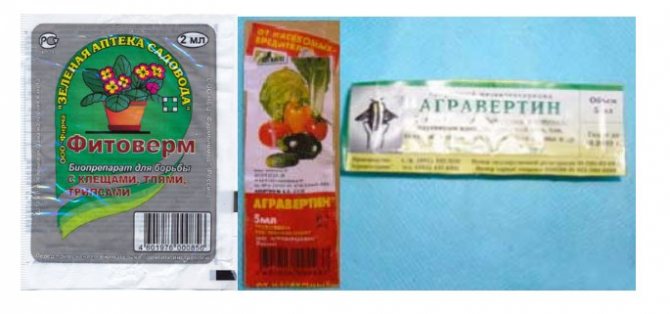

A preparation containing an alcoholic extract of streptomycete fungi. It is found on sale under a different, updated name Akarin. It is produced in liquid form, most often in ampoules, less often in vials.
Act
It belongs to the group of contact-intestinal insecticides, it gets inside insects with food. It causes paralysis, due to which the pest stops feeding after about 8-10 hours, and then, after 48 hours, dies. On open ground plantings, the impact rate is up to 16 hours. The drug is effective against insects:
- stem fly;
- aphids;
- thrips;
- spider mite.
Affects adults, larvae.
Application
Alcohol extract is diluted in water. The proportions are indicated in the instructions for the product. To prevent the appearance of pests, Akarin (5 ml) is diluted in 4 liters of water, when killing insects, the solution is more saturated: 5 ml is taken for 1.5 liters of water.
The agent is not absorbed into plant tissues, it is recommended to add shavings of laundry soap, a spoonful of shampoo to the working compositions to improve adhesion.
On a note! The insecticide will be most effective in dry, hot weather.
Spray every 7-7 days, if necessary, repeat the treatment. After 1-2 days of treatments, the plants are not watered.
Benefits
- Fast action.
- The ability to use in the heat.
- Efficiency.
- Affordable price for Agravertine.
- Ease of use.
- Has no toxic effect on humans.
- Combines with trace elements, plant growth stimulants, fertilizers.
disadvantages
- Low effect when applied in rain.
- The tool is toxic to the inhabitants of reservoirs, bees, therefore, it is used only strictly for plants. Raspberries are processed before flowering, as well as after harvest, in the fall.
Trichodermin
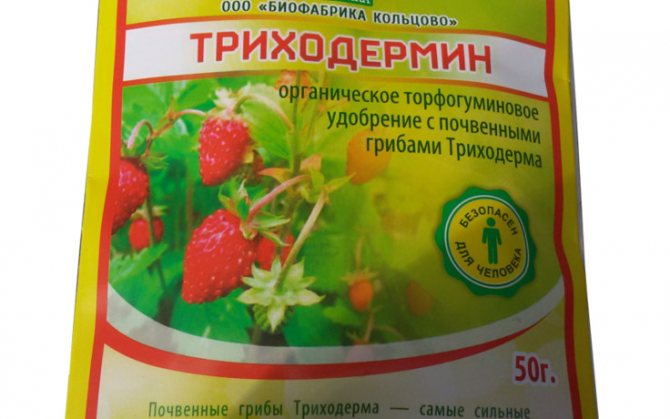

It is a biofungicide, based on the fungus Trichoderma lignorum, as well as biologically active substances secreted by it. For raspberries, it is used as a preventive drug against bacterial and fungal diseases. Effective as protection against rot, verticillosis, cytosporosis.
Act
The Trichoderma fungus contained in the preparation has high activity in the destruction of fungi, toxins, bacteria, viruses. Does not adversely affect plants.
Application
Trichodermin is diluted in water, proportions: 10 ml of the concentrated composition are added per liter of liquid. Raspberries are sprayed from the moment the buds bloom, 1-2 times. The interval between treatments is 10 days.
Benefits
- Universal preparation (suitable for different plants).
- Affordable price.
- Effective when used correctly.
- Trichodermin is safe for humans.
- The product is not dangerous for bees and other insects.
disadvantages
- It is a prophylactic agent; in case of mass infection of raspberries with infections, other drugs are used.
- The product is used only in warm weather (temperature over + 14ºC). When processing raspberries in spring, this must be taken into account, otherwise the effectiveness of the drug will be zero.
Fitosporin


In spring, the natural biofungicide Fitosporin (or Fitosporin-M) is used for spraying berry bushes. The preparation is based on hay bacillus (Bacillus subtilis) strains, additional components - chalk, Gumi.
On sale, biofungicide is presented in three forms:
- powder;
- liquid;
- paste.
For preventive treatments of raspberries, Fitosporin is recommended without a humic additive (see the description of the composition).
Act
The culture spores contained in the powder or paste interact with water and are activated. For normal life, they need nutrition, so bacteria "attack" pathogens, fungal spores. The result is the neutralization of the hazardous environment.
Application
On raspberries, Fitosporin is used as an effective prophylactic agent against fungal infections. Used for a number of pests:
- stem gall midge;
- raspberry fly;
- raspberry beetle.
As a means of treatment, it is suitable only in the early stages of the disease, when the infection is advanced, they are sprayed with stronger chemicals.
Fitosporin for processing is diluted in water:
- 5 grams of powder is added to the bucket;
- when using the paste, first prepare the substrate: 100 grams per 200 ml of water), then use it as a basis for the working solution: 3 teaspoons per bucket;
- Fitosporin in liquid form is ready for use, 10 drops are added to sprinkle raspberries in 200 ml of water.
Attention! Work with any such preparations is carried out in protective clothing, using gloves.
Raspberries are processed in the spring, when the leaves are blooming, as well as during the formation of ovaries.
Benefits
- High activity against pathogenic fungi.
- Good compatibility with other drugs.
- Environmental friendliness.
- Fitosporin does not harm humans.
- The drug is not harmful to insects.
- With possible small overdose of the drug, side negative effects do not occur.
disadvantages
- In bright sunlight, Bacillus subtilis bacteria are killed. It is recommended to process the bushes early in the morning or late in the evening.
- Difficulties arise when preparing the solution, since there is no dispenser.
- It is required to add an adhesive (soap, shampoo) to the working solution.
Polyversum BP
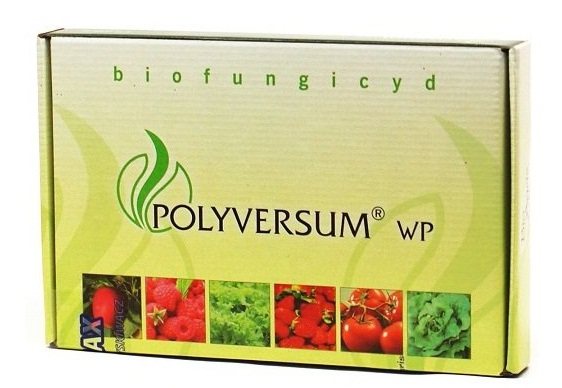

Biological preparation based on the predatory fungus Pythium oligandrum. It is a contact drug, produced in powder form (in packs).
Act
After activation (dilution of the powder with water), the fungus begins to function. In the process of nutrition, it destroys spores of fungal diseases.
On raspberries, the action is effective as a prophylaxis against fading shoots, gray rot. Used from the beginning of flowering to the beginning of fruiting.
Application
Applied as a working solution for spraying, after activating bacterial spores:
- take 250 grams of the drug;
- placed in a mesh dust bag;
- the bag is placed in any suitable container (bucket, tank, container);
- fill the contents of the bag with water (5-6 liters);
- leave for an hour;
- then squeeze the resulting composition out of the bag;
- the finished composition is sprayed with raspberries (0.7 liters per 10 square meters of planting).
Benefits
- Effective as a preventive measure.
- Raspberry treatments with Polyversum not only protect plants from diseases, but also improve the quality of berries.
- Promotes the activation of plant immunity.
- High environmental friendliness of the product.
disadvantages
- Difficulties in the preparation of a working solution.
- For treatments, it is necessary to prepare a new solution each time.
Bitoxibacillin
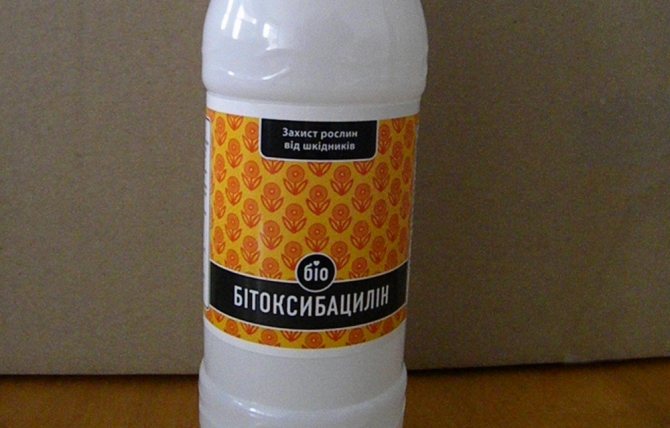

A biological product based on the soil bacterium Bacillus thuringiensis, which has a toxic effect on parasites.
A product is produced in the form of a powder; a solution is used to process raspberries.
Application
Prepare a solution just before they are going to process the bushes. The best time is before the raspberry bloom, although the biological product is also used in the summer.
For prophylaxis against pests, the proportions of the solution: 80 grams of powder are taken for 10 liters.
Raspberry mosaic and its treatment
Mosaic occurs in raspberries due to the viral bacillus Raspberry vein virus. There are varieties that are less likely to get sick with mosaics: Hercules, Tulameen, Polana, Autmn Treasure.
The reasons
Mosaic can be spread by pests - mites, aphids, raspberry beetle, nematodes. They pierce leaves and stems to drink juices and infect.
The disease can be transmitted through diseased seedlings. After pruning the affected plants, it is imperative to disinfect the tools.
Symptoms
Diseased bushes grow more slowly. The berries are made small. They have no taste.
Prevention and treatment
For prophylaxis, aphids, nematodes, and ticks are eliminated, since they can be the distributors of the virus leading to a mosaic.
It is necessary to cut off the growth in a timely manner to avoid thickening of the plantings. Make sure that the seedlings are completely healthy.
For treatment, raspberries are sprayed with Inta-Vir, Tanrek, Commander. In the spring before the blooming of the buds and in the fall after picking raspberries, the bushes are sprayed with compositions with copper, for example, a 1% solution of Bordeaux liquid. Sick bushes are uprooted and burned.
Pest and disease control methods
For the treatment of raspberries, biological agents and chemicals (ready-made solutions) are used. Also, spraying of shrubs is carried out using folk remedies. They are no less effective than chemicals, but only if applied in a timely manner.
Spraying in spring is carried out before bud break. The procedure is:
- Treatment of the root space of the bush.
- Spraying shoots and leaves.
- Direct tillage.
Such measures are effective in the fight against many types of parasites.
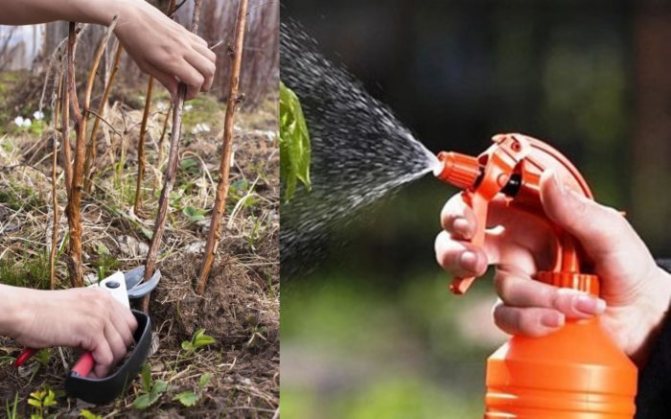

Testimonials
Evgeny M: I have been growing raspberries on my site for a long time, but I have never processed them, either with chemicals or other means. The only thing I do is regular watering and pruning of dry branches. But he never complained about the harvest. This year I will try to make a top dressing, maybe there will be even more berries.
Natalia V: Since childhood, I adore raspberries, so many different varieties grow in our country house.I noticed for a long time that ordinary raspberry bushes get sick much less than varietal ones. I chose Baktoit to process my raspberry tree. He qualitatively fights almost all diseases.
Spend a few hours of your time caring for raspberries in the spring, and they will thank you with a rich harvest in the coming season!

